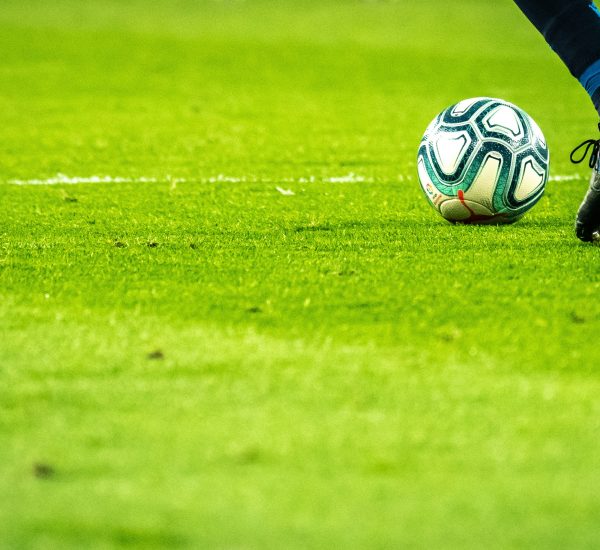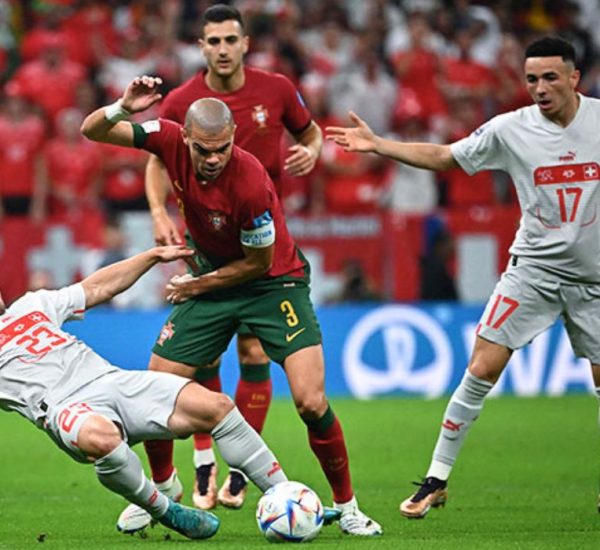The soccer back pass rule was introduced in 1992 by FIFA to prevent goalkeepers from picking up balls that are deliberately passed to them by a teammate. The idea behind the rule was to cut down on time-wasting. In practice, this has had a positive effect. In 1992, American Joe-Max Moore scored the first goal from an indirect free kick for Barcelona.
Goalkeepers are not allowed to pick up a ball that has been deliberately passed to them by a member of their own team
The laws of soccer say that goalkeepers are not allowed to pick up the ball if it has been deliberately passed to them by a teammate. This rule has been changed from an older version, which stated that goalkeepers were allowed to only take four steps while holding the ball. The new rule means that match officials have to take into consideration how long the goalkeeper is allowed to hold the ball.
In association soccer, this rule is known as the “back pass rule.” It states that a defender cannot deliberately pass the ball to a goalkeeper. Therefore, if a defender deliberately heads the ball towards the goalkeeper, play should stop, and the defender should be warned for unsporting behavior. Afterwards, the ball is awarded to the opposing team.
Another example of a case where goalkeepers are not allowed to pick up disputed balls is when a teammate plays the ball back to the goalkeeper with an alternative body part, such as a shin. The ball is not permitted to be played back using the shin, since it is not part of the foot. Therefore, it may be difficult for referees to determine whether the ball is being deliberately played back to a goalkeeper.
If a teammate plays the ball into the penalty area, a goalkeeper is not allowed to pick up the ball with their hands. This is an infraction of the laws of soccer, and a red card may be issued.
FIFA introduced the back-pass rule in 1992
The back-pass rule was introduced to prevent time-wasting and safe territorial play in soccer games. It was implemented after the 1990 World Cup, which became notorious for slow, sloppy play. In this tournament, many defenders often passed the ball back to their goalkeepers to maintain possession. It was then expanded in 1997 to ban goalkeepers from picking up throw-ins. Any illegal back-pass is a foul and results in an indirect free-kick for the opposing team.
While it’s true that the rule has been controversial, it has had some benefits. It has reduced the amount of time-wasting and increased attacking play. One of its most notable benefits was the reduction of infringements. This rule also helped prevent goal-keeping mistakes, as the rule does not allow goalkeepers to intercept back passes that have been deliberately made by an opponent.
The 1990 World Cup was a colossal failure for entertaining soccer, and the back-pass rule was a vital element in Ireland’s campaign. They finished third in Group F, and despite having a mediocre attack, they qualified through a draw against Egypt and then a penalty shoot-out. Denmark, who qualified through the disqualification of Yugoslavia, was another team to rely on a back-pass rule.
It was a success
The introduction of the back pass rule in soccer was a big step forward for the game. During the 1991 World Cup, many coaches were unhappy with the experiment and played their team’s games using a different set of rules.
The problem was recognised at the 1992 AGM of the International Federation of Association Soccer, which was held in the Celtic Manor Hotel in Wales. At the meeting, the back pass rule was unanimously endorsed by delegates and inserted into the laws of the game in the 1992 World Cup.
When it was implemented, soccer games improved in speed, intensity, and scoring. It was easier to score goals when teams were playing on the ball and the back pass rule helped improve the game’s speed. Goal scoring has risen significantly since then, and the new rule helped redefine the position of goalkeepers and integrate them more into the game.
The first competitive match after the back pass rule was introduced was between Liverpool and Leeds United. As a result, Liverpool’s goalkeeper, Bruce Grobelaar, looked frightened of the ball when the opposition team had possession of the ball. The English players, meanwhile, did not seem to mind the new rule.
In spite of teething problems, the back pass rule changed soccer in England. The new rule made soccer a more exciting spectacle, and helped to increase television ratings and revenue. The change was a big success, and the Premier League has become one of the most popular leagues in the world. The new rule also boosted the quality of television coverage, as the Sky Sports product is now a cinematic experience.
It discourages time-wasting
The back pass rule is a penalty given to a team that plays a bad pass. Generally, the team that receives a penalty has to make two touches before it can kick the ball into the opponent’s goal. This rule was adapted to protect goalkeepers, as it discourages the players from using their hands to touch the ball.
The FIFA back pass rule came into effect in 1992, and it discourages time-wasting and excessive defensive play. It makes the game more exciting and interesting. Previously, the goalkeeper would be allowed to handle the ball inside the penalty area, but he couldn’t pass it back to an opponent.
It was originally introduced to prevent teams from deliberately wasting time, but the rules have since expanded to prevent goalkeepers from picking up throw-ins. In addition, the goalkeeper could be penalized for an illegal back pass, which would result in an indirect free kick.
During the 1990 World Cup in Italy, teams were notorious for wasting time by passing the ball back to their goalkeepers. It was an overly defensive play that drew criticism. In addition, many goalkeepers held the ball or dropped it when under pressure. It was considered a definite era-ender and the FIFA back pass rule aimed to stamp out time-wasting on the field.
The FIFA back pass rule has become a common sight in soccer. It aims to prevent players from wasting time by holding onto the ball for too long. The rule is part of Law 12, Section 2 of the Laws of the Game. It was created to protect players and the referees, and it has helped improve the game for fans.
It is often misunderstood
The back pass rule in soccer is often misunderstood and can lead to a foul. The back pass rule states that the opponent must touch the ball two times before he or she can score. This violation can lead to a penalty, which results in an indirect free kick for the opposing team. Due to this misinterpretation, there are many rules that have been put in place to prevent this from happening.
The most common misunderstood rule in soccer is the offside rule. This rule is intended to apply at the moment the ball is played, but it is often misunderstood by spectators. The offside ruling is based on the position of the teammate who is not in possession of the ball. But since the ball moves forward during a game, the relative positions of two defenders can change.
The back pass rule in soccer was introduced in 1992 in response to a growing concern over time-wasting and safe territorial play. The 1990 World Cup had gained a bad reputation for a slow game style, in which defenders routinely passed the ball back to the goalkeeper to hold onto possession.
The rule was expanded in 1997 and was extended to the throw-in as well. When a back pass occurs, the goalkeeper is penalized with an indirect free kick.
It led to disproportionate numbers of throw-ins
The soccer back pass rule was introduced in 1990 to correct a problem in the game. This rule, which allowed goalkeepers to pick up a back pass, resulted in more throw-ins than a normal game. Goalkeepers had to kick out more than 50 balls in some games. Despite the fact that this rule led to more throw-ins, overall the experiment was a success.
When the rule first came into effect, the first game was played between USA and Italy. This game marked the last time a ball was legally passed back to a goalkeeper. The next time it happened was during a match between El Salvador and Nicaragua, a CONCACAF World Cup qualifier. However, the soccer back pass rule did not prevent players from causing disproportionate numbers of throw-ins.
Ultimately, the back pass rule was intended to reduce timewasting. Although timewasting is still a big problem in soccer, supporters acknowledge that it has improved the game overall. The back pass rule also makes it easier for goalkeepers to act as defensive playmakers and perform Cruyff turns on their own goal line.
FIFA, the governing body of soccer, imposed the back pass rule in 1992. It was created to prevent goalkeepers from picking up the ball after a defender’s throw-in. FIFA was appalled by the number of throw-ins that were occurring and decided to do something about it. The rule has since been tweaked and remains one of the most popular soccer rules.



